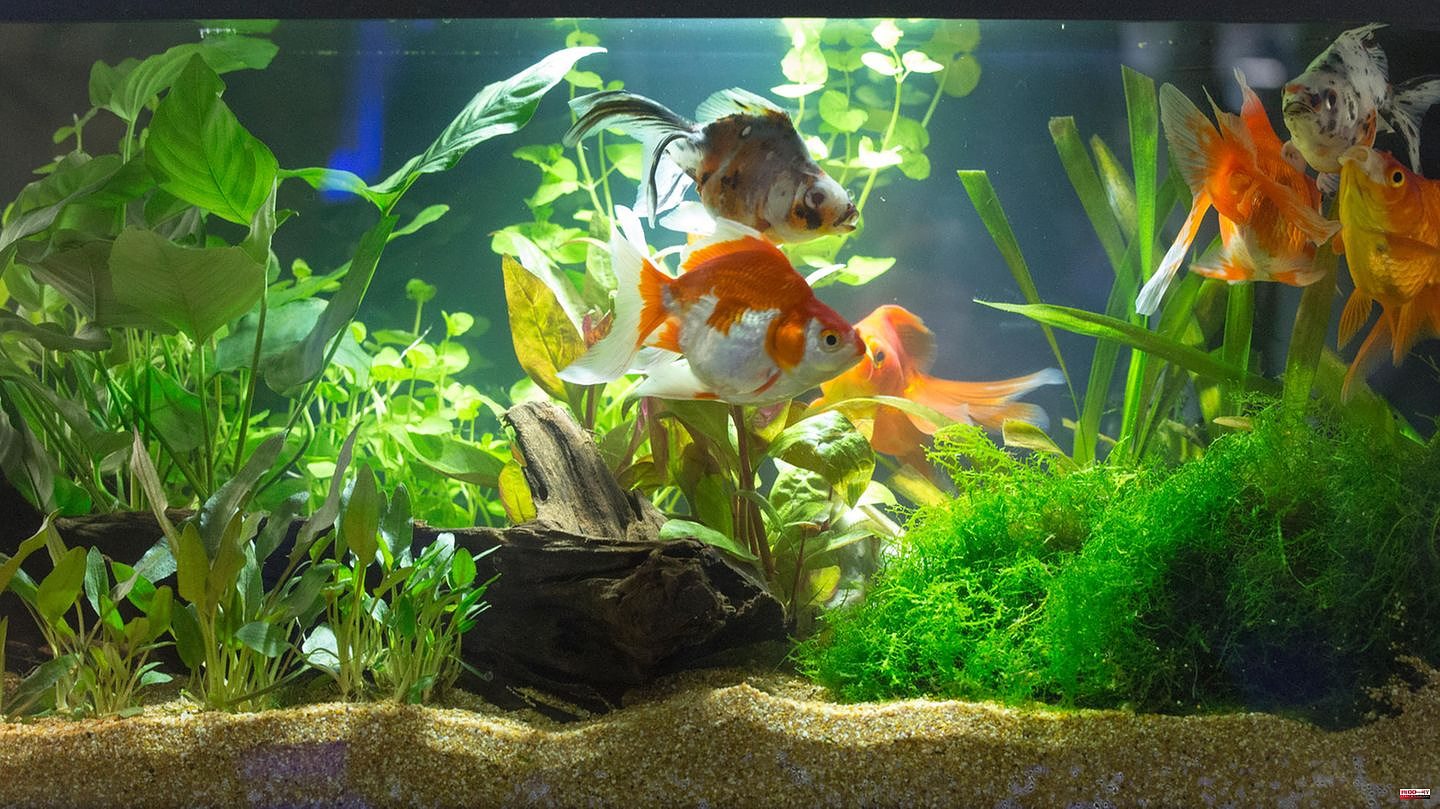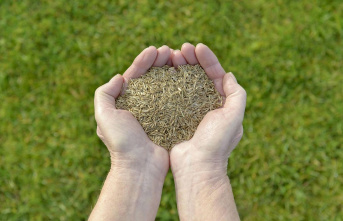The word "algae" comes from Latin and means "seaweed" or "weed". There are both microscopically small protozoa, also called microalgae, and macroalgae: these are seaweed that can grow to be over 50 meters long. Due to the photosynthesis that algae constantly carry out, they produce vital oxygen. Apart from the fact that they serve as a source of food for many other creatures - including in the aquarium. Nevertheless, they have the negative property of spreading too quickly and uncontrollably. They attack the glass panes, stones and filters. A nightmare for aquarists who value above all the view of their bred flora and fauna. The question arises how to prevent algae from spreading uncontrolled in the aquarium without removing them completely?
In theory, it is impossible to remove all algae from the aquarium, no matter how small. And that's a good thing, so as not to destroy the ecological balance. Especially in the first phase, when you have just bought a new water basin, the growth of algae is unavoidable and later also absolutely necessary for the animal and plant world in the aquarium. However, once the installation is over, there are a number of things you can do to keep the water at least apparently free of algae. It's a lot easier than getting rid of a tank that's already covered in algae - which happens especially if you've added too many fish, added too much food or changed the water too infrequently.
You don't have to get out the chemicals right away to get the algae under control. Especially in the unstable start-up phase, when the biological balance has not yet leveled off, you can use algae-eating Amano shrimp or snails and fast-growing stem plants to keep algae growth under control. You should only let the first fish into the water when so-called filter bacteria have formed. The location is also an important indicator: the more direct sunlight gets into the aquarium, the faster the green threads will bloom and thrive. But too much or too little lighting can also help the algae to grow faster.
If the algae in your aquarium have gained the upper hand after setting it up or even after it has been standing for a long time, there may be an imbalance in the water. In order to find out why the algae feel so comfortable in the tank, you should first identify them - this is the only way to combat them effectively. In addition, a water analysis is recommended to find out whether there is a nutrient deficiency that the plants need to grow, for example: nitrate or phosphate, for example, are essential for an ecological balance in the aquarium. If there is a lack of nutrients, algae can spread unchecked.
Brush algae are particularly stubborn. As the name suggests, its bushy shape and dense threads are reminiscent of a brush. Although they belong to the red algae family, their color tends to be dark green to black. Since they make themselves comfortable on leaves in particular, the affected plants must be disposed of completely - selective removal is unfortunately not possible. To combat them, you can keep guppies and platies in the aquarium.
Beard algae belong to the same family and owe the name to their bearded appearance. They also like to stick to aquatic plants, filters or decorations and are difficult to remove. The most effective way to do this is to clean the infested equipment, change the flow direction and get rid of the affected leaves - if the infestation is severe, it is also advisable to remove the entire plant from the aquarium.
Green algae spread primarily when there is an oversupply of nutrients in the water. You can tell that the panes of the aquarium are infested when furry deposits appear that look like long, green threads. In order to fight the algae permanently, you can put the following animals in the tank: racing, limpet or antler snails as well as antennae or shield catfish. Alternatively, a magnetic window cleaner is extremely helpful.
Blue-green algae also cover stones, plants and decorative material in the aquarium with a slimy, blue-green coating. They spread above all when the water quality is poor – a water analysis is also recommended here. If the nitrite and nitrate content is particularly high, blue-green algae feel extremely comfortable. Catfish and snails, among others, can help here. Chemical anti-algae agents are even more aggressive.
Diatoms have a brownish appearance and are therefore often confused with brown algae, which, however, only occur in the sea. In the aquarium, on the other hand, the annoying inhabitants can cover all surfaces - this happens more often after the tank has been set up again and disappears by itself over time. However, if the diatoms persist, this indicates poor water quality.
Thread algae cover plants and decorations in the aquarium with long threads that can be easily pulled off by hand. These can be removed even better with a thin stick - as they don't really stick to the surfaces, just hold on to them. If you don't want to manually remove the green threads, you can also resort to the algae-eating shrimp, which love thread algae.
Easy Life AlgExit is said to help best against green, thread, beard and brush algae. It not only ensures that the progressive algae growth is stopped, but also that the algae disappear and any algae spores that are still present are removed - however, the chemical club also has a catch: not all types of fish or shrimp tolerate the agent. For this reason, you should follow the packaging instructions.
The Tetra Algizit is also said to be an effective remedy against algae - however, it is not entirely clear which types of algae the product is suitable for. According to customer opinions, the product should primarily help against blue and beard algae. The ingredient is available in both tablet and liquid form. The release of the active ingredient promises a quick result, but customer opinions differ here.
The same applies to the AQUALITY Aquarium Algen-EX, which promises quick and effective help with algae of all kinds. The agent is added to the water over a period of four weeks and, in addition to removing the green threads and streaks, is also intended to promote plant growth. And all without copper and other heavy metals.
You can take a number of preventive measures to ensure that your aquarium does not develop an algae problem. These include - in addition to the already mentioned location, the water quality, the amount of food and the number of fish - the size of the basin, the carbon dioxide content and the filter system. The individual points are explained in more detail below:
The size of the aquarium
In fact, the size of the aquarium has a significant impact on how quickly algae will spread in it. The larger the tank, the less algae will form in it - at least that's what experienced aquarists say. Of course, it always depends on how "full" the water is: the more fish and plants, the higher the risk of an algae plague. For this reason, a tank size with a maximum capacity of 100 liters is recommended for newcomers so that they can familiarize themselves with the aquarium and its inhabitants.
The carbon dioxide content (CO2)
Carbon dioxide is important for the growth of aquatic plants - it is absorbed through photosynthesis and used to form oxygen. Conversely, however, this means that if too much CO2 is consumed, algae formation increases. A carbon dioxide system can remedy this, although this should be used with caution. For example, if too much CO2 is generated at once, this can also damage the plants and promote algae growth.
The filter system
The use of a filter system is essential in almost every aquarium. It removes plant remains and fish excrement from the water and treats it biologically. The rule of thumb here is: The system cannot be too big, but it can be too small - it is all the more important to adapt the filter to the size of the pool. When buying, you should pay attention to the individual properties and needs of the filter. This is the only way he can fulfill his task well and conscientiously.
This article contains so-called affiliate links. There is more information here.












